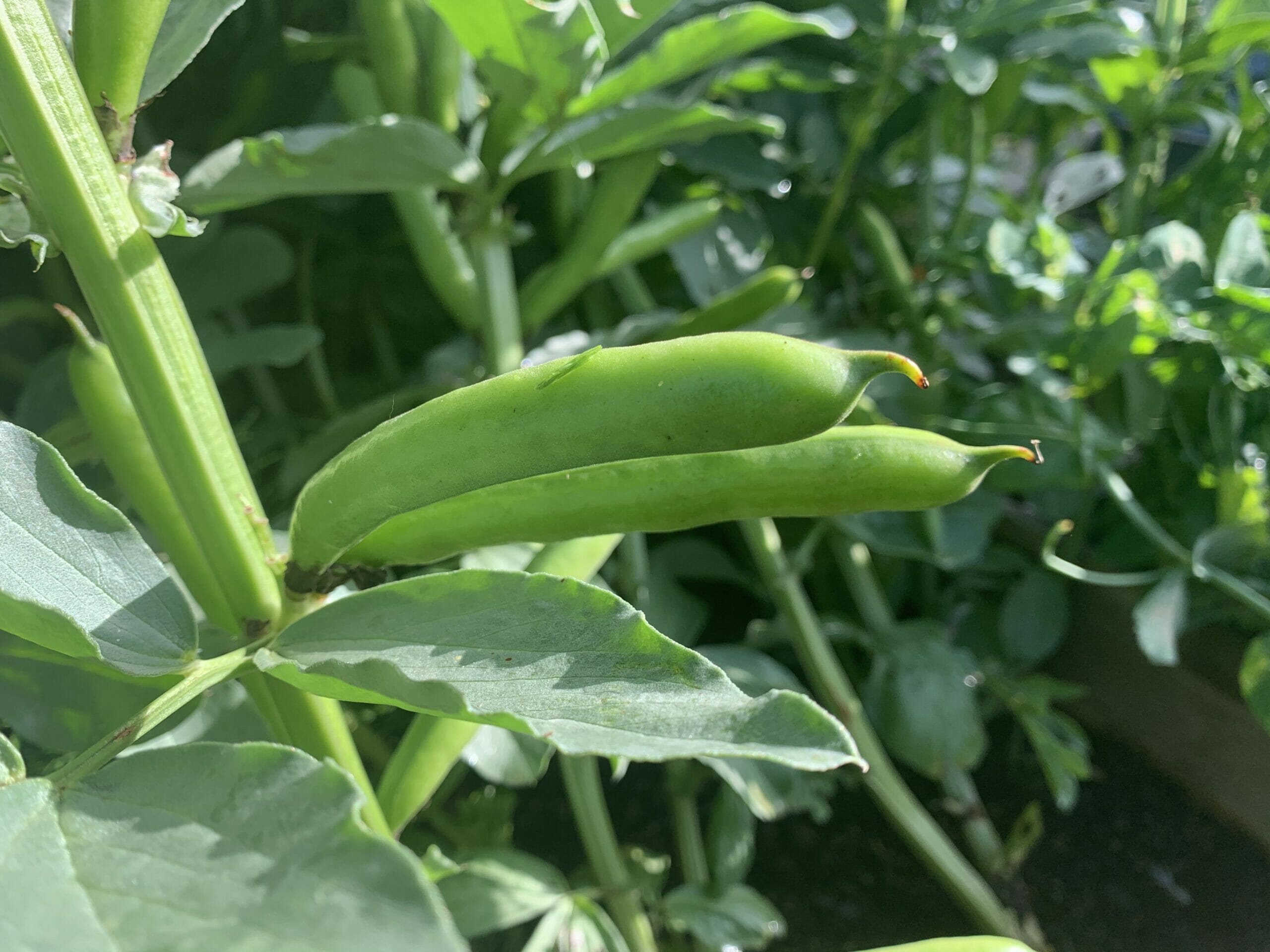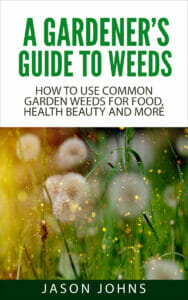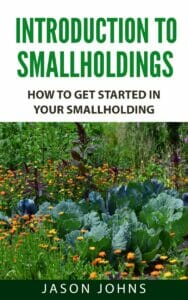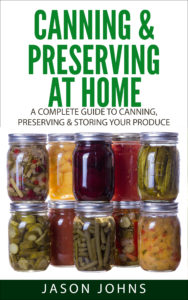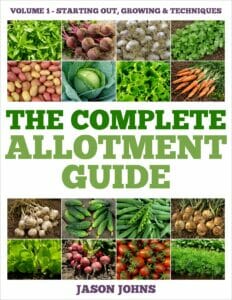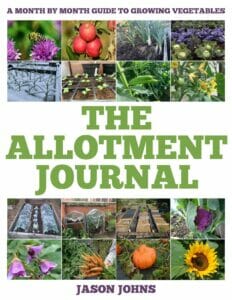The vegetable garden quietens down a little in August, surprisingly enough, giving you a bit of time to enjoy the weather and the fruits of your labour. Your main jobs will still be weeding and watering, but now you will be busy harvesting everything and wondering what on earth you will do with it all (or is that just me?). It’s an enjoyable month on the vegetable plot as the sun should be out and you can take some time to enjoy watching the world go by.
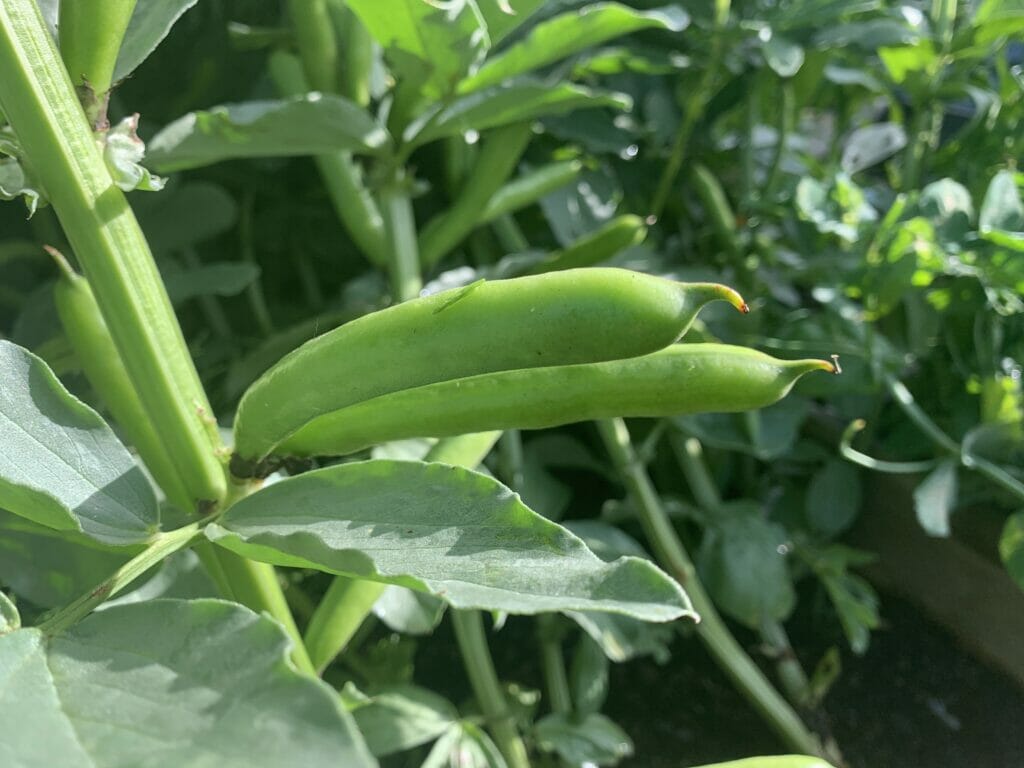
What To Harvest
Sowing and planting in August has slowed right down this month as very little will be ready to harvest before the onset of winter frosts. Some fast growing root vegetables or lettuces will survive, but not much else. As you harvest other crops, so you can plant out overwintering vegetables such as spring cabbages and winter cauliflowers.
- Apples – early apples will be ready to harvest this month. It can be hard to tell when apples are right, though finding more on the ground can be an indication. In some varieties, the colour deepens or changes. Generally, picking one and eating it is the best way of telling. Pick apples by lifting the apples slightly and twisting it, rather than pulling. It should come off the tree easily.
- Apricots – these are ready to harvest when they are slightly soft and can be removed from the tree with little resistance.
- Aubergines – when they are black and glossy, they are ready to harvest. Store in your refrigerator and use as soon as possible.
- Beetroot – harvest these regularly otherwise they grow too big and become woody and hard to eat. Store in your refrigerator with the leaves removed (leave 1″ of stalk though) or pickle for longer term storage.
- Blackberries – blackberries and other hybrid berries such as loganberries, tayberries and so on will all be ready to harvest this month. Store in your refrigerator, freeze or make into a jam for longer term storage.
- Blackcurrants – these turn a shiny blue/black when they are ripe. Pick them as soon as you can and store in your refrigerator. They can be frozen whole or made into jams for longer term storage.
- Blueberries – these ripen at different times, so check regularly and harvest a couple of times a week. Store in your refrigerator, freeze or process for longer term storage.
- Broad Beans – there should still be some pods left on the plant that can be harvested this month. When you have harvested the last pods from a plant, cut it down to root level, compost the foliage and leave the nitrogen rich roots in the ground.
- Broccoli – keep harvesting both sprouting broccoli and calabrese before the flower buds start to open.
- Cabbages – summer and red cabbages should be ready to harvest this month. Pick them when the heads are solid and dense. Store in your refrigerator or blanch and freeze.
- Carrots – the last of the early carrots and the first of the maincrop carrots will be ready to harvest this month. Store wrapped in plastic in your refrigerator or blanch and freeze for longer term storage.
- Cauliflowers – both summer and autumn cauliflowers should be ready to harvest. Store in your refrigerator or blanch and freeze for long term storage.
- Celery – harvest before the leaves turn yellow otherwise the stalks become stringy.
- Chillies/peppers – start harvesting these this month. Generally, though this doesn’t apply to all varieties, peppers become sweeter and chillies hotter as they ripen.
- Cucumbers – harvest before they turn yellow. Any yellow cucumbers found on your plants should be removed and composted to encourage the production of new fruits.
- Figs – the first of the figs are ready this month. Pick when the colour darkens and they are slightly soft. Often there is a bead of nectar at the base when the fruit is ripe.
- Florence Fennel – bulb fennel will bolt in dry weather, so harvest the bulbs before they elongate and become too tough to eat. The stumps can be left in the ground and they will produce new shoots. The feathery leaves can be used in stir-fries and salads.
- French Beans – both dwarf and climbing varieties will be ready this month. Pick while small to eat the pods whole, or leave to swell to eat the beans or save them to plant next year.
- Garlic – the last of your garlic is harvested this month. Hang it up to dry for use over the winter months
- Globe Artichokes – keep picking the globes as they are ready, working from the top of the plant down.
- Kohl Rabi – keep harvesting kohl rabi and eating them raw or cooked.
- Lettuces – keep your lettuces well watered and shade them if you can otherwise they will bolt. If the temperatures are too high, new seeds will struggle to germinate. Harvest as and when you need them.
- Marrows – harvest as they reach the size you prefer, though don’t leave them too long otherwise the seeds become large and a bit chewy to eat.
- Onions – harvest the last of your onions and dry them thoroughly before storing.
- Pak Choi – harvest the young leaves as a cut-and-come-again crop.
- Peaches and Nectarines – these will be ripe this month. Pick the fruits when they are a little bit soft and pull away from the tree easily.
- Pears – these are very difficult to tell when they are ripe because they ripen from the inside out. It is better to pick when under-ripe and ripen off the tree.
- Peas – pick the pods while they are still young for the sweetest peas. Keep them netted to protect them from birds.
- Plums – most plums and gages will be ready to harvest this month. They do not store well, so use soon after harvesting, freeze, or make into a jams or sauces.
- Potatoes – there will still be potatoes ready to harvest. Allow them to dry thoroughly and then store in paper bags or hessian sacks. Do not wash any potatoes that you plan to store and put any damaged potatoes to one side for immediate use.
- Radish – you should be harvesting these now. Remember to harvest them while they are small before they become woody and difficult to eat. Store without the leaves, wrapped in plastic in your refrigerator.
- Raspberries – summer fruiting raspberries will finish this month and autumn fruiting ones should be starting towards the end of the month. Harvest regularly as they very quickly become overripe.
- Red/White Currants – harvest these berries when they are ripe but before they become too soft. Cut the entire strig (or truss) off and use a fork to remove the berries when you get home.
- Runner Beans – harvest your beans every day or two otherwise they will become too big and stringy. Unless you are allowing some pods to ripen to save seeds, remove overripe pods and compost to encourage the production of more pods.
- Shallots – lift the last of these and dry them before storing.
- Spinach – this will bolt if the weather is hot and dry, so water regularly and shade if you can. Harvest the leaves regularly.
- Spring Onions – keep harvesting spring onions before the bulbs grow too large. The large the bulbs become, the strong the taste of the onion.
- Squashes – harvest the squashes every few days as they will grow very quickly and can become too large for eating.
- Strawberries – keep harvesting strawberries as and when they are ripe.
- Sweetcorn – when the tassels or silk turn brown or black, the cobs are generally ready to harvest. The juice from the kernels should be milky not clear when they are right. Harvest as soon as they are ready otherwise animals such as rats, squirrels and badgers will eat them.
- Tomatoes – keep harvesting your tomatoes as they ripening. Fresh tomatoes do not store well, so use them as soon as you can or process them for longer term storage.
- Turnips – the roots are best eaten while still relatively small. Don’t forget the young leaves can be eaten like spring greens or spinach.
Vegetable Garden Jobs
There is not a great deal to plant at this time of year, but as you are clearing space from finished crops, you can plant overwinter crops such as winter cauliflower and cabbage. You will still be watering and weeding this month, paying particular attention to crops like lettuce and spinach that bolt if the weather gets too hot.
- Beetroot – you can still sow some beetroot for an autumn harvest.
- Broccoli – sprouting broccoli can be planted out this month for harvest next spring.
- Cabbage – sow more cabbages for a spring harvest, remembering to keep them covered to protect them from pests and birds.
- Carrot – this is the last month of the year you can sow carrots. Try to sow a fast maturing variety for an autumn crop.
- Cauliflowers – winter and spring cauliflowers that were started off earlier in the year can be planted in their final position now for a harvest early next year.
- Kale – plant out any overwinter kale plants, sown earlier in the year.
- Lettuce – some varieties can still be sown, though if temperatures are too high they may struggle to germinate.
- Onions – Japanese onion seeds can be sown this month. Mark drills with string and sow seeds and leave them until spring to thin out. They will be okay overwinter as they are hardy and will be ready to harvest next summer.
- Radish – keep sowing radishes which should be ready to harvest before the winter frosts.
- Spinach – some varieties can be planted this month for an autumn harvest.
- Swiss Chard – sow this for an autumn / winter harvest.
- Turnip – this is the last chance you have to sow turnips to harvest before winter sets in.
Fruit Tree/Bush Jobs
August is a good month for fruits as many of them will be ripening. Remember to harvest fruits regularly as many of them can become overripe very quickly. A lot of soft fruits do not store well, even in your fridge, so freeze them or turn them into a jam or similar for longer term storage.
- Blackberries – your blackberries and hybrid berries need the new canes tying in ready for next year whereas old canes are removed in the autumn.
- Currants – summer prune all currant bushes once the fruits have been harvested.
- Fruit Trees – heavily laden fruit trees need to be propped up with rope or supports as branches can break under the weight of the fruit.
- Gooseberries – summer prune your gooseberry bushes once they have finished fruiting.
- Grapes – prune side shoots and remove some leaves so the fruit gets some sun.
- Strawberries – the runners you pegged down earlier in the year will have roots by now and can be planted out into a sunny location and kept well watered.
General Jobs
There are a lot of jobs in the vegetable garden other than watering and weeding. Keep debris under control as slugs and snails will take the opportunity to hide anywhere and decimate your plants when you are not looking. This is also a good month for painting sheds and other woodwork as it is generally dry.
- Brassicas – earth up brassicas to support them as they do not like being blown in the wind.
- Celery – earth up your non-self-blanching celery to protect the stems from the light.
- Climbing Beans – pinch out the tops of climbing beans so they don’t become top heavy and concentrate on growth lower down.
- Cucumbers – continue to tie up your cucumber plants, using additional canes when necessary.
- Mulch – mulch your plants, ideally after rain, to keep the moisture in the ground.
- Peppers – tie up and feed your pepper plants.
- Potatoes – keep earthing up potatoes to prevent the tubers being exposed to the light.
- Pumpkins – feed your pumpkins once a week with a high potash tomato fertiliser. If the weather is damp, lift them off the ground using planks of wood or bricks to prevent them from rotting.
- Tomatoes – keep feeding, pinching out and tying up your tomato plants.
Greenhouse and Polytunnel Jobs
The greenhouse or polytunnel will be getting very hot this month, so you will need to keep doors, windows and vents open. Your plants may need to be watered two or three times a day, depending on the temperatures.
- Damping Down – each morning, on hot days, poor water over the floor of your greenhouse to increase the humidity.
- Pests – check your plants regularly for pests and diseases. Take action the moment you spot a problem to prevent them from spreading.
- Potatoes – cold stored potato tubers can be planted in containers for a Christmas harvest.
- Shade – delicate plants in the greenhouse will benefit from some shading to protect them from sun scorch.
- Tomatoes – remove the lower leaves from vining tomato plants to allow air and light to reach the fruit. Make sure these are kept well-watered and there is sufficient air flow between the plants.
